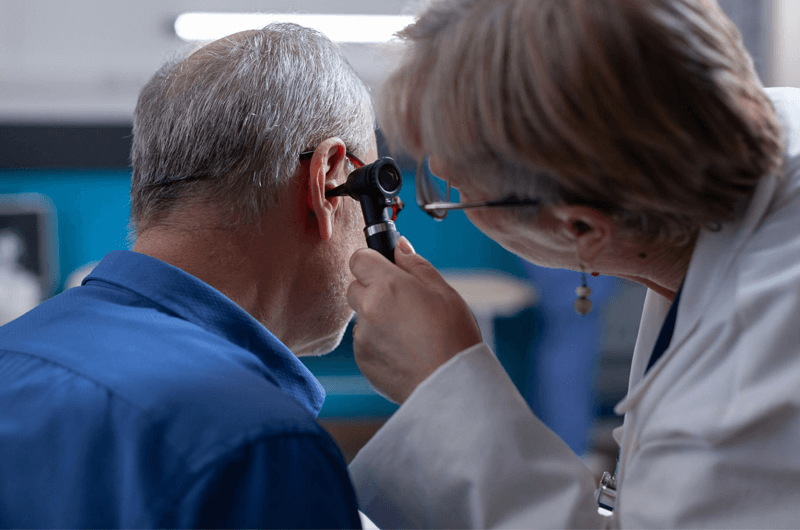The medical coding for otitis externa or “swimmer’s ear” is quite different in ICD-10 compared to that in ICD-9. In the new coding system, ears get their own chapter while earlier they were included along with the eyes. There are several additional codes for otitis externa in the new coding system with many of them simply specifying laterality.
ICD-10 Codes for Otitis Externa
In ICD-10-CM, otitis externa is coded to H60 and H62. The codes are as follows.
- H60.2: Malignant otitis externa
- H60.3: Other infective otitis externa
- H60.5: Acute noninfective otitis externa
- H60.6: Unspecified chronic otitis externa
- H62.4: Otitis externa in other diseases classified elsewhere (Code first underlying disease, such as: erysipelas (A46), impetigo (L01.0))
How the New Codes Differ from ICD-9
There is only one code in ICD-9-CM for acute swimmer’s ear – 382.12, while there are four choices in the ICD-10 coding system such as:
- H60.33: Swimmer’s ear
- H60.331: Swimmer’s ear, right ear
- H60.332: Swimmer’s ear, left ear
- H60.333: Swimmer’s ear, bilateral
- H60.339: Swimmer’s ear, unspecified ear
Both diffuse otitis externa and otitis externa hemorrhagicia are combined into one code (380.10) in ICD-9 while each case has four codes in the new system.
- H60.31: Diffuse otitis externa
- H60.311: Diffuse otitis externa, right ear
- H60.312: Diffuse otitis externa, left ear
- H60.313: Diffuse otitis externa, bilateral
- H60.319: Diffuse otitis externa, unspecified ear
- H60.32: Hemorrhagic otitis externa
- H60.321: Hemorrhagic otitis externa, right ear
- H60.322: Hemorrhagic otitis externa, left ear
- H60.323: Hemorrhagic otitis externa, bilateral
- H60.329: Hemorrhagic otitis externa, unspecified ear
Other otitis externa with ICD-9 code 380.22 is divided into seven series of codes in ICD-10 with each including specific codes for laterality.
- H60.50: Unspecified acute noninfective otitis externa
- H60.501: Unspecified acute noninfective otitis externa, right ear
- H60.502: Unspecified acute noninfective otitis externa, left ear
- H60.503: Unspecified acute noninfective otitis externa, bilateral
- H60.509: Unspecified acute noninfective otitis externa, unspecified ear
- H60.51: Acute actinic otitis externa
- H60.511: Acute actinic otitis externa, right ear
- H60.512: Acute actinic otitis externa, left ear
- H60.513: Acute actinic otitis externa, bilateral
- H60.519: Acute actinic otitis externa, unspecified ear
- H60.52: Acute chemical otitis externa
- H60.521: Acute chemical otitis externa, right ear
- H60.522: Acute chemical otitis externa, left ear
- H60.523: Acute chemical otitis externa, bilateral
- H60.529: Acute chemical otitis externa, unspecified ear
- H60.53: Acute contact otitis externa
- H60.531: Acute contact otitis externa, right ear
- H60.532: Acute contact otitis externa, left ear
- H60.533: Acute contact otitis externa, bilateral
- H60.539: Acute contact otitis externa, unspecified ear
- H60.54: Acute eczematoid otitis externa
- H60.541: Acute eczematoid otitis externa, right ear
- H60.542: Acute eczematoid otitis externa, left ear
- H60.543: Acute eczematoid otitis externa, bilateral
- H60.549: Acute eczematoid otitis externa, unspecified ear
- H60.55: Acute reactive otitis externa
- H60.551: Acute reactive otitis externa, right ear
- H60.552: Acute reactive otitis externa, left ear
- H60.553: Acute reactive otitis externa, bilateral
- H60.559: Acute reactive otitis externa, unspecified ear
- H60.59: Other noninfective acute otitis externa
- H60.591: Other noninfective acute otitis externa, right ear
- H60.592: Other noninfective acute otitis externa, left ear
- H60.593: Other noninfective acute otitis externa, bilateral
- H60.599: Other noninfective acute otitis externa, unspecified ear
To assign the most appropriate ICD-10 codes for otitis externa, the clinical documentation should be complete and indicate the type of otitis externa such as non-infective, actinic, chemical, contact, eczematoid, infective, reactive, or malignant as well as the laterality (right, left, bilateral). In certain circumstances, it may be perfectly legitimate to use an unspecified code like H60.509. However, it may not go so well with payers if laterality cannot be specified. So, you should be very careful when reporting unspecified codes with unspecified laterality.
Even after setting up your billing system to keep up with ICD-10 coding, you may face challenges as a sudden drop in revenue may be expected just after the implementation of the new code system, lack of time for administrative work owing to rising number of patients as a result of the Affordable Care Act (ACA) and lack of proper training in using the new codes. In such a scenario, partnering with a professional medical billing and coding company that offers the service of AAPC certified and ICD-10 ready coders is a viable option.




